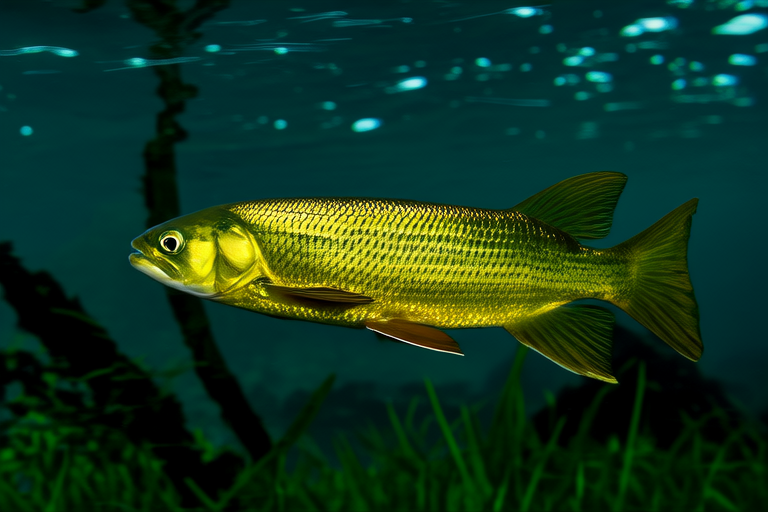Arowana Fish: Majestic Creatures of Luck and Prosperity
The Arowana, also known as Asian Arowana or Dragon Fish, is one of the most fascinating and sought-after aquarium species in the world. Renowned for its majestic appearance, this freshwater fish has captivated the hearts of aquarists and enthusiasts alike. This article delves into the unique characteristics, cultural significance, and care requirements of Arowana fish, exploring their historical background, myths surrounding them, and why they are considered symbols of luck and prosperity in various cultures.
Historical Background and Myths
The Arowana’s rich history dates back centuries, with records of its existence in ancient texts and folklore. In Southeast Asia, the Arowana has been revered for its mythical origins and believed to possess supernatural powers. The fish’s elongated body, sharp teeth, and shimmering scales have inspired countless legends and stories, making it a symbol of good fortune and protection. These myths have contributed significantly to the Arowana’s reputation as a bringer of luck and prosperity.
Cultural Significance
In many Asian cultures, the Arowana is highly valued for its perceived ability to ward off evil spirits and bring financial success. It is often associated with the Chinese dragon, another symbol of strength, wisdom, and power. Due to its resemblance to the mythical creature, the Arowana is frequently kept in homes and offices to attract positive energy and ensure a prosperous future. Additionally, the fish is believed to be a powerful talisman that can protect against negative influences and bring harmony to its surroundings.
Majestic Appearance
With its sleek, streamlined body and iridescent scales, the Arowana boasts a striking appearance that sets it apart from other freshwater fish. The scales are particularly noteworthy, featuring a metallic sheen that can range from deep green to vibrant red, depending on the species. The Arowana’s large eyes and prominent mouth give it a regal, almost intimidating presence, further enhancing its allure. These physical traits contribute to the fish’s popularity among collectors and enthusiasts.
Habitat Preferences
Native to the rivers and swamps of Southeast Asia, the Arowana thrives in environments characterized by slow-moving waters and dense vegetation. It prefers water temperatures between 78°F and 84°F (25°C to 29°C) and a pH level ranging from 6.5 to 7.5. To replicate these conditions in a home aquarium, it is essential to provide ample space, appropriate filtration, and regular water changes. Additionally, the tank should be equipped with robust filtration systems and heaters to maintain stable water parameters.
Dietary Needs
The Arowana is a carnivorous fish that requires a diet rich in protein. In the wild, it feeds primarily on small fish, insects, and crustaceans. As pets, Arowanas should be provided with a varied diet consisting of high-quality pellets, frozen or live foods such as bloodworms, krill, and feeder fish. It is crucial to avoid overfeeding, as excess food can lead to poor water quality and health issues. Feeding the Arowana twice daily, in small quantities, is recommended.
Optimal Environment for Pet Arowana
To ensure the well-being of your Arowana, it is vital to create an optimal environment that mimics its natural habitat. This includes providing adequate space, proper filtration, and suitable water parameters. Arowanas require a minimum tank size of 125 gallons (473 liters) for a single fish, with additional space required for each additional Arowana. The tank should be equipped with robust filtration systems, heaters, and ample hiding spots. Regular water changes and maintenance are essential to maintain water quality and prevent health problems.
Challenges and Considerations for Potential Owners
While the Arowana is undoubtedly a magnificent addition to any aquarium, prospective owners must be prepared for the challenges and responsibilities associated with caring for this species. One significant consideration is the cost, as Arowanas can be expensive due to their rarity and demand. Additionally, their large size and aggressive nature make them unsuitable for inexperienced aquarists or those with limited space. Potential owners should also be aware of the legal restrictions and permits required for owning and trading Arowanas in certain regions.
Conservation Efforts
The Arowana faces numerous threats in the wild, including habitat destruction, pollution, and overfishing. Conservation efforts are underway to protect this species and ensure its survival for future generations. Many organizations and governments are implementing measures to regulate trade, enforce fishing bans, and promote sustainable practices. These initiatives aim to preserve the Arowana’s natural habitats and reduce the pressure on wild populations. By supporting these efforts, we can help safeguard the future of this remarkable creature.
Conclusion
The Arowana is a truly extraordinary fish, celebrated for its majestic appearance, cultural significance, and perceived ability to bring luck and prosperity. With its rich history, captivating myths, and unique characteristics, the Arowana continues to fascinate and inspire people around the world. For those considering adding an Arowana to their aquarium, it is essential to understand the challenges and responsibilities involved in caring for this species. By providing an optimal environment and adhering to best practices, we can ensure the well-being of our Arowana companions while contributing to their conservation and preservation.
